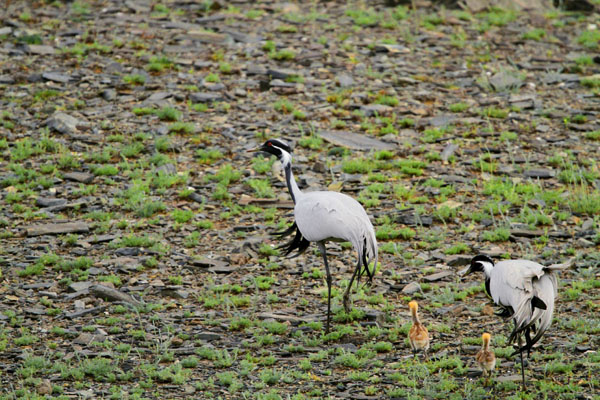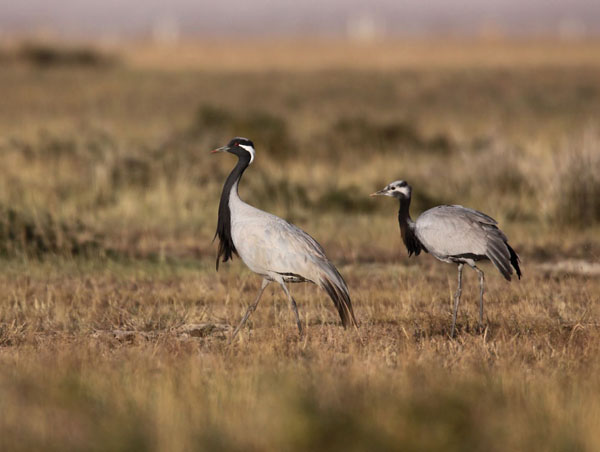Anthropoides virgo
IUCN
LCBasic Information
Scientific classification
- name:Anthropoides virgo
- Scientific Name:Anthropoides virgo,Demoiselle Crane,Lady Crane
- Outline:Wading birds
- Family:Gruiformes Gruiformes Demoiselle
Vital signs
- length:68~92cm
- Weight:1985~2750g
- lifetime:27years
Feature
There is a tuft of white ear feathers behind the eye that is very eye-catching. There are relatively few of them in my country, and it is a very rare and uncommon bird.
Distribution and Habitat
In China, it breeds in the northeast, the Ordos Plateau in Inner Mongolia, and the northwest. Occasionally, individuals appear in eastern China with other cranes in winter. Abroad, it is distributed in the southeast of the Palearctic to Central Asia and North Africa (almost extinct), and winters in South Asia.
It is a bird species of plateaus, grasslands, swamps, semi-deserts and cold deserts, and can live in an environment with an altitude of 5,000 meters. In the breeding season, it mostly inhabits grasslands near water sources, and moves in pairs or family groups. It gathers in large groups during migration and wintering. During migration, it passes through the Qinghai-Tibet Plateau, and some groups can fly over the Himalayas.
Appearance
It is slightly smaller in size, with a long neck, long legs and a short beak. The adult bird has a white head, white ear feathers that extend into clusters like silk, a black head and neck, black breast feathers that extend and droop like silk, and tertiary flight feathers that extend into ribbons, with darker gray ends. The male bird has a red iris, the female bird has an orange-yellow iris, a yellow-green beak and black feet.
Details
The Demoiselle Crane is the smallest crane. It is blue-gray in color, with black eyes, sides of the head, throat and front neck. There is a white ear tuft behind the eyes that is very eye-catching. The black feathers on the front neck are extended and hang on the chest. The feet are black, and the wing tips are black when flying. The black feathers on the front neck are extended and hang on the chest. The feet are black, and the wing tips are black when flying. When flying, it forms a "V" formation with the neck straight. The call is like a horn, similar to that of the gray crane, but it is sharper and less undulating.

Except for the breeding season, they usually move in families or small groups, and sometimes they move alone. They often move in shallow water near the water or on the higher ground near the water on the sheep grass meadow. They are timid and alert, good at running, often stay away from humans, and are unwilling to get together with other cranes.
The breeding season is from April to June, with one male and one female. When they first migrate, they often move in small groups, and then gradually disperse into pairs and occupy nesting areas. They usually do not build nests, but lay eggs directly on the exposed and dry saline-alkali land in the sheep grass meadow, with sheep grass, reeds, Artemisia capillaris and other plants growing around them.

Listed in the "National Key Protected Wildlife List": National Second Class Protected Animal (effective December 10, 1988).








